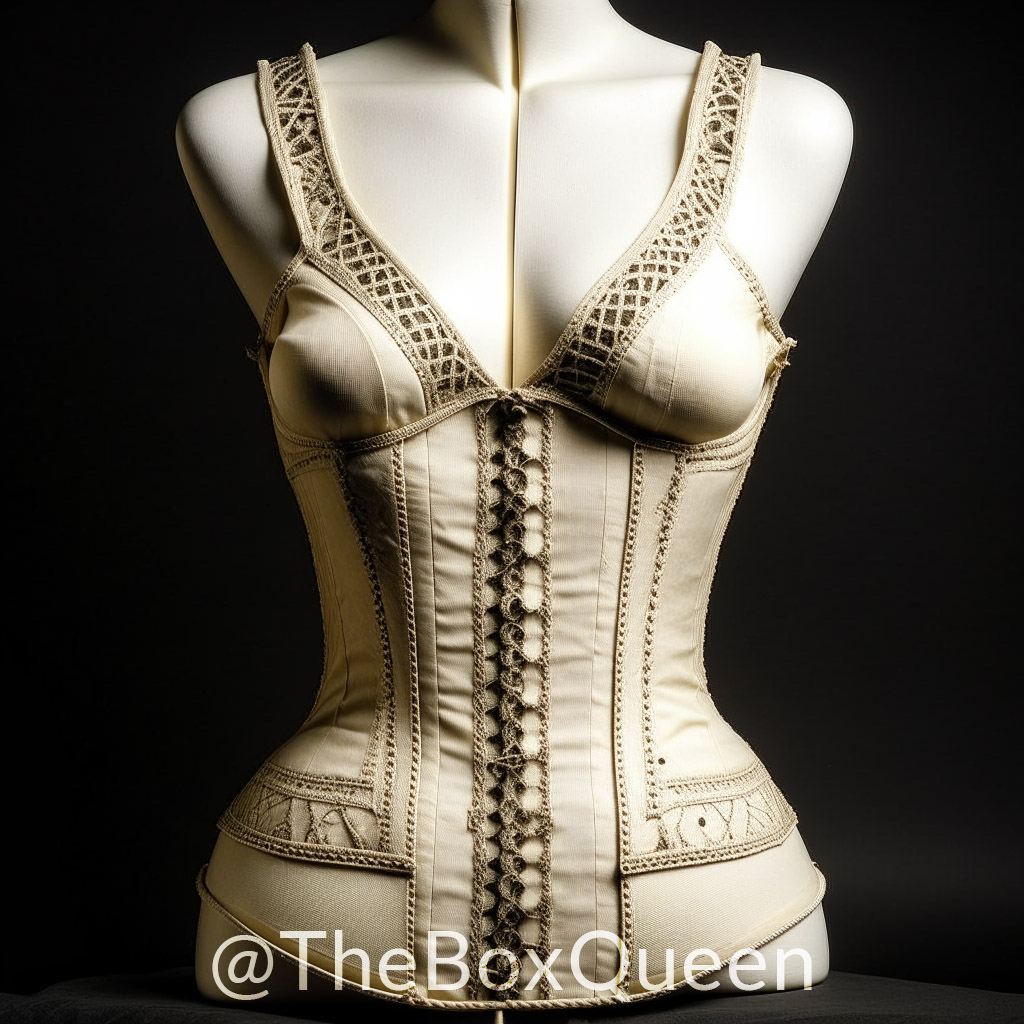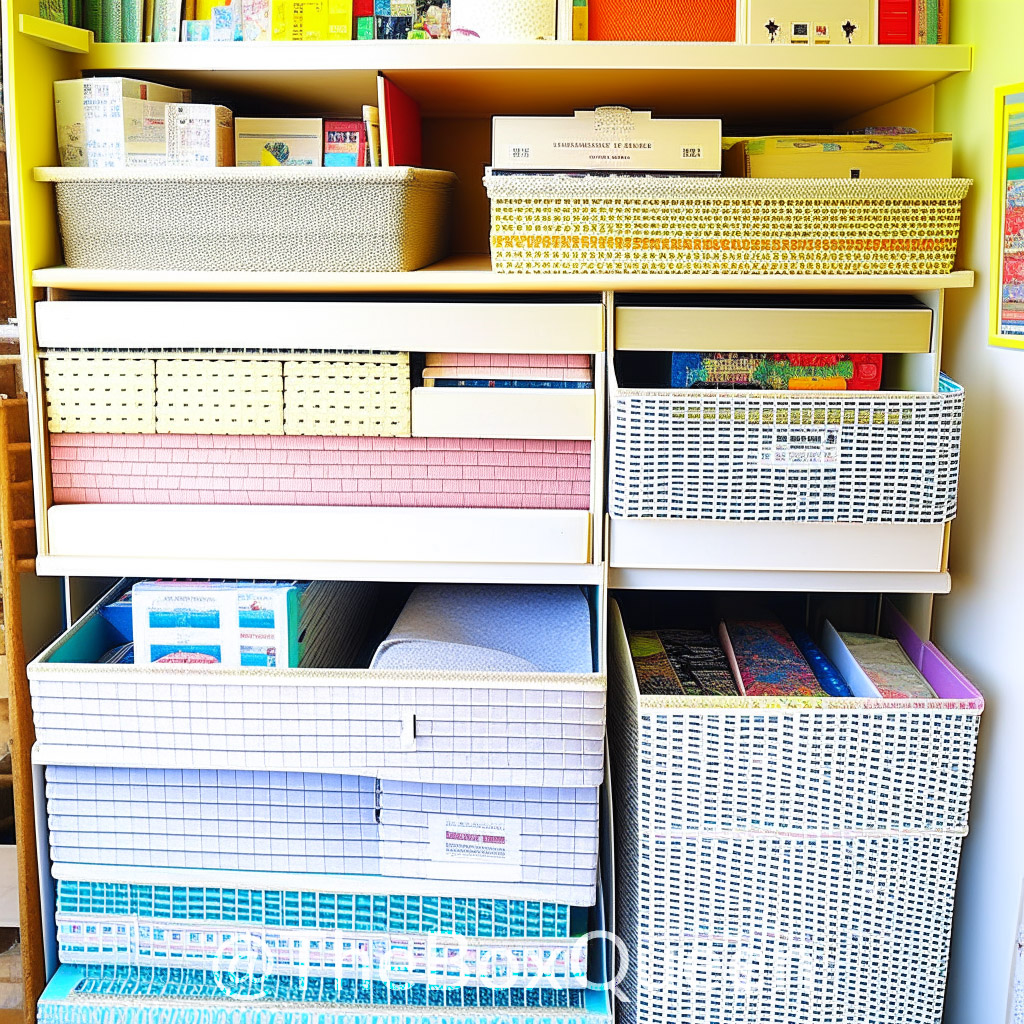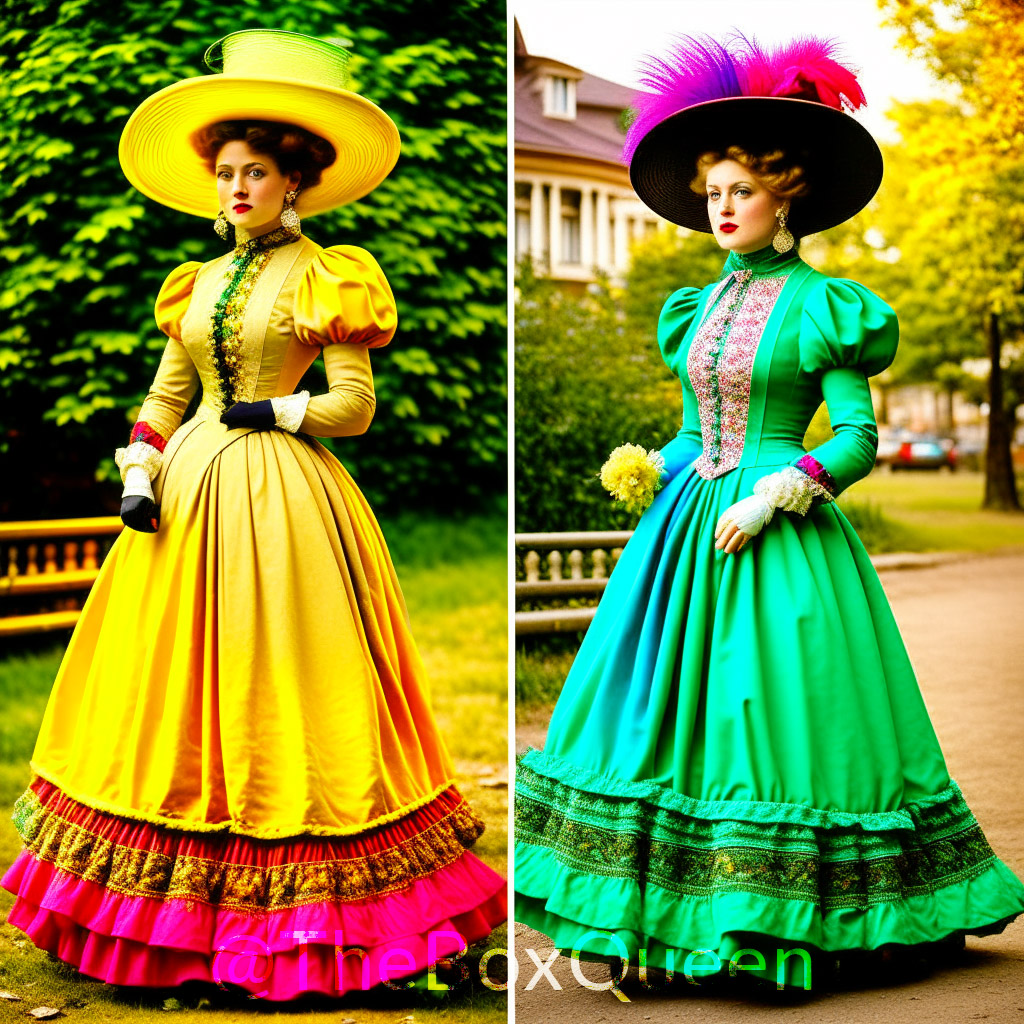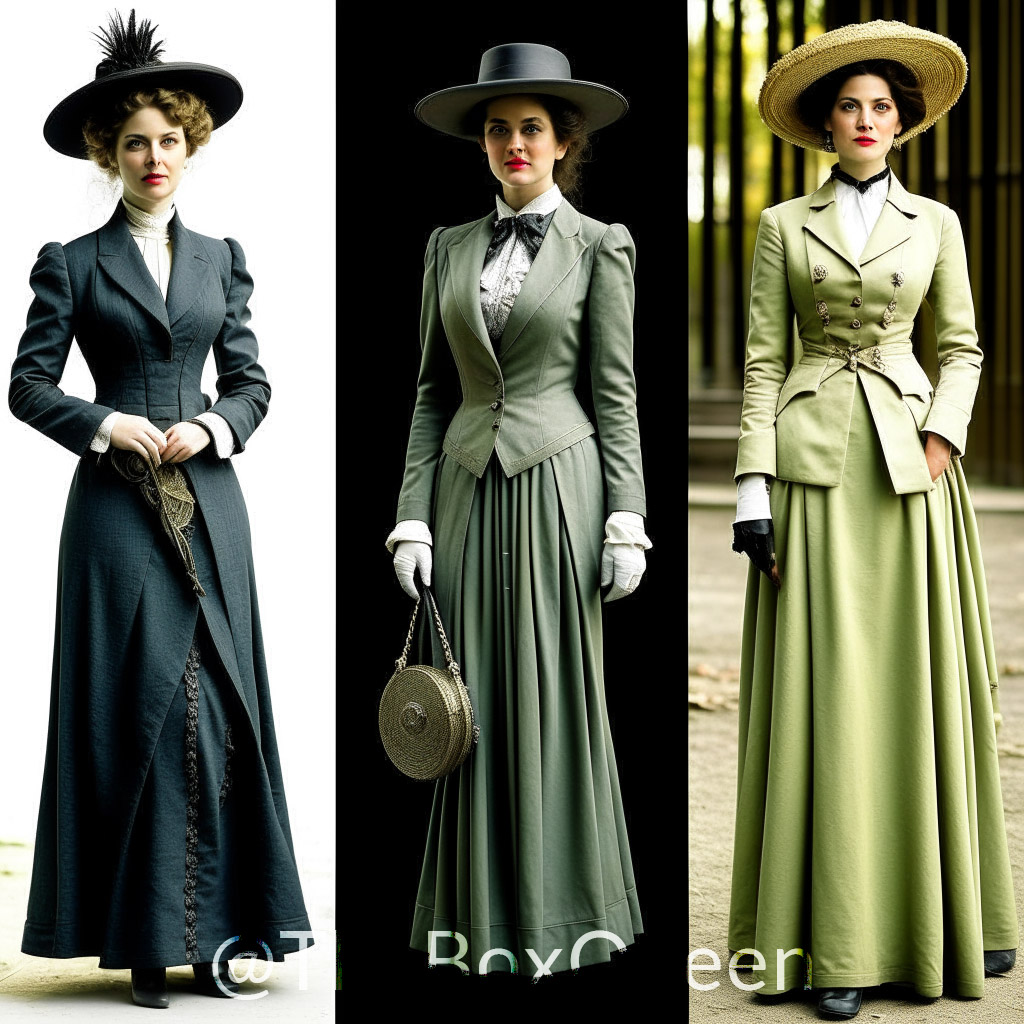The S-shaped corset, often referred to as the S-bend corset, was a stunning and divisive fashion trend that appeared in the early 20th century during the Edwardian era. This type of corset drastically changed a woman’s body’s natural shape, giving her an exaggerated appearance with a forward-leaning chest and a prominent lower back arch. The S-shaped corset was a break from the Victorian era’s tight-laced corsets, but it was not without controversy and health issues.
Design and Purpose of The S-Shaped corset:
The S-shaped corset was designed to accomplish the fashionable “Gibson Girl” look, popularized by the visuals of artist Charles Dana Gibson. This idealized feminine shape had a round, full bust, a small waist, and a slender, projecting rear. The S-shaped corset had a high, rounded bustline that pushed the chest forward and lifted the bosom to create this appearance. The corset also pushed the hips back, emphasizing the curve in the derriere and giving the lower back a noticeable arch.
Controversy and Health Concerns:
The S-shaped corset was criticized and raised health-related questions, despite some people viewing it as a representation of beauty and femininity. Its severe spine curvature may cause discomfort and put undue stress on the back muscles. Additionally, it changed the body’s natural position, which could have negative health effects like breathing difficulty, digestive troubles, and weak abdominal muscles.
In addition, the strain on the inside organs sparked worries about possible harm to the body’s critical systems. The quest of an inflated and unnatural body through corsetry, according to critics, is an unrealistic and even detrimental beauty ideal.
Shift in Fashion and Legacy:
The S-shaped corset gradually lost favor as the 1910s went on, despite being fashionable during the Edwardian era. Women started looking for more practical, functional attire that allowed for more flexibility of movement as fashion trends changed. As utility and practicality increased in value during the First World War, this contributed to a change in fashion.
When the S-shaped corset became less popular, women started to favor less restrictive, looser undergarments, which signified a significant change in fashion. The rigid corsets of the Edwardian era were replaced by girdles and brassieres that were more adaptable to the changing needs and aspirations of modern women.
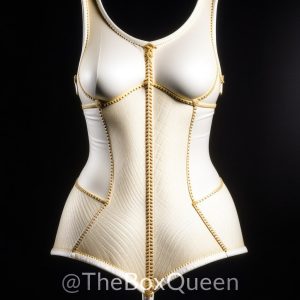
Final Thoughts:
The S-shaped corset continues to be an interesting and divisive chapter in design history. It encapsulates the sometimes excessive lengths people have gone to throughout history to adapt to prevailing standards of attractiveness as an iconic image of the Edwardian era’s beauty ideals. A warning about the potential health dangers of pursing beauty ideals that depart from normal body forms, the S-shaped corset stands as a symbol of the complicated relationship between fashion, culture, and the human form today.
Q1: What was the purpose of the S-shaped corset in the Edwardian era?
A1: The “Gibson Girl” aesthetic, which is characterized by a large bust, small waist, and curvy posterior, was what the S-shaped corset was designed to create. It caused the lower back to arch excessively and pushed the chest forward.
Q2: What health concerns were associated with the S-shaped corset?
A2: The excessive curve of the S-shaped corset caused safety issues. It could result in discomfort, back muscular strain, respiratory issues, digestive issues, and weak abdominal muscles. Potential hazards included pressure on internal organs.
Q3: Why did the S-shaped corset fall out of fashion?
A3: As the 1910s went on, fashion trends changed, and women started to want clothing that was more useful and allowed them to move more freely. The move was also inspired by World War I, which emphasized usefulness and pragmatism in times of war.
Q4: How did the decline of the S-shaped corset impact fashion?
A4: The waning popularity of the S-shaped corset signaled a dramatic change in fashion, resulting in the acceptance of looser, less constricted undergarments like brassieres and girdles. This adjustment reflected the shifting priorities and aspirations of contemporary women.
Q5: What is the legacy of the S-shaped corset in the history of fashion?
A5: The S-shaped corset represents a fascinating and divisive period in the history of fashion. It shows the complicated relationship between fashion, society, and the human form and symbolizes the severe steps taken to adhere to existing beauty standards.
Q6: How did the S-shaped corset impact women’s perception of beauty during the Edwardian era?
A6: By reinforcing the idealized “Gibson Girl” figure, the S-shaped corset influenced women’s perceptions of beauty and established an unattainable norm. It ignored natural body contours in favor of emphasizing an exaggerated silhouette.
Q7: Were there any positive aspects of the S-shaped corset in terms of fashion and style?
A7: The Edwardian era’s popular hourglass figure was achieved thanks to the S-shaped corset. It enhanced the sophistication and elegance of women’s clothing, becoming a universal symbol of the time’s ideas of beauty.
Q8: How did the fashion industry respond to the health concerns surrounding the S-shaped corset?
A8: As health risks became increasingly obvious, the fashion industry eventually moved away from severe corsetry. Less restricting undergarments started to be made by designers, giving women more practical and pleasant options.
Q9: Are there any modern fashion trends inspired by the S-shaped corset?
A9: Even though the S-shaped corset itself is not a popular trend in contemporary clothing, corsetry and undergarments continue to be influenced by it today. Some modern designs are inspired by the hourglass shape while putting an emphasis on comfort and usability.
Q10: What lessons can be learned from the S-shaped corset’s historical impact?
A10: The S-shaped corset is a symbol of how crucial it is to strike a balance between style and functionality. It sparks conversations about unattainable beauty standards and the dangers of severe body modification for the sake of fashion.
Q11: Were there any influential figures or designers who popularized the S-shaped corset during the Edwardian era?
A11: The “Gibson Girls” by Charles Dana Gibson, who embodied the ideal of fashion at the period, contributed to the popularity of the S-shaped corset. The exaggerated silhouette was also promoted by fashion designers like Paul Poiret.
Q12: Did the S-shaped corset have any impact on women’s social roles and behaviors during the Edwardian era?
A2: The S-shaped corset had a limited effect on women’s social roles. Although it maintained the idealized image of the feminine, it had no immediate impact on how many women participated in public life or the workforce. However, the general restriction of corsets might have affected how women moved and engaged in physical activity.
Q13: How did society react to the controversies surrounding the S-shaped corset?
A3: The S-shaped corset elicited a range of responses. Others attacked it for its possible health hazards and unattainable beauty standards, while some praised it as a representation of feminine grace and beauty. The controversy over the corset played a part in ongoing discussions about women’s fashion and body image.
Q14: Did the S-shaped corset influence fashion beyond the Edwardian era?
A4: The S-shaped corset’s appeal waned after the Edwardian era, although its influence on fashion persisted in a number of ways. Since the demand for an hourglass figure continued, more useful undergarments that accentuated natural curves rather than straining the body into extreme proportions were developed.
Q15: Are there any iconic fashion pieces or garments that were specifically designed to be worn with the S-shaped corset during the Edwardian era?
A5: During the Edwardian era, the S-shaped corset had an impact on the general silhouette of women’s apparel. Dresses and dresses were styled to go with the corset’s defined waist and protruding bust. Empire-waist gowns were also common at this time and complemented the contour of the corset with their high waistlines.
